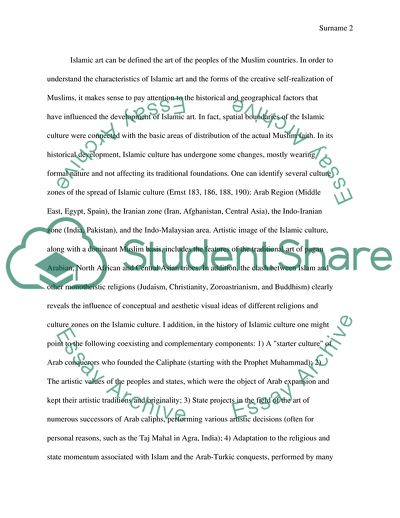Cite this document
(Islamic Art as a Means for Creative Self-Expression of Muslims Book Report/Review Example | Topics and Well Written Essays - 2250 words, n.d.)
Islamic Art as a Means for Creative Self-Expression of Muslims Book Report/Review Example | Topics and Well Written Essays - 2250 words. https://studentshare.org/religion-and-theology/1843711-ernst-c-siddiqui-mquran-book-review
Islamic Art as a Means for Creative Self-Expression of Muslims Book Report/Review Example | Topics and Well Written Essays - 2250 words. https://studentshare.org/religion-and-theology/1843711-ernst-c-siddiqui-mquran-book-review
(Islamic Art As a Means for Creative Self-Expression of Muslims Book Report/Review Example | Topics and Well Written Essays - 2250 Words)
Islamic Art As a Means for Creative Self-Expression of Muslims Book Report/Review Example | Topics and Well Written Essays - 2250 Words. https://studentshare.org/religion-and-theology/1843711-ernst-c-siddiqui-mquran-book-review.
Islamic Art As a Means for Creative Self-Expression of Muslims Book Report/Review Example | Topics and Well Written Essays - 2250 Words. https://studentshare.org/religion-and-theology/1843711-ernst-c-siddiqui-mquran-book-review.
“Islamic Art As a Means for Creative Self-Expression of Muslims Book Report/Review Example | Topics and Well Written Essays - 2250 Words”. https://studentshare.org/religion-and-theology/1843711-ernst-c-siddiqui-mquran-book-review.


